Fly Fishing Tip: Use Tippet Rings to Extend the Life of Expensive Leaders
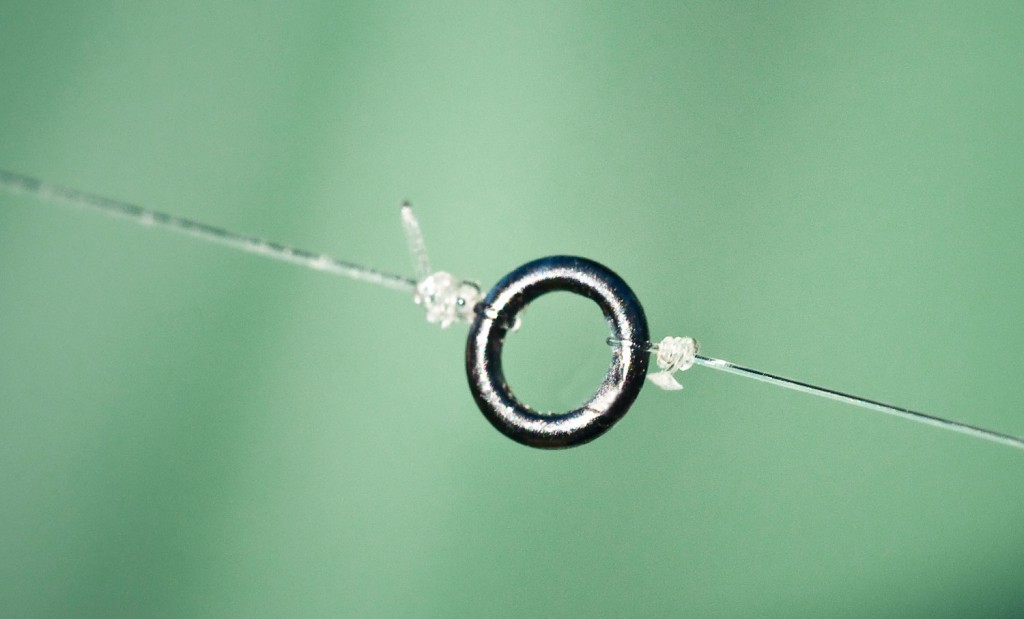
TIPPET RINGS ARE GREAT FOR EXTENDING THE LIFE OF LEADERS
Leaders have got quite expensive over the past couple decades. Recently, I saw a pack of two fluorocarbon leaders retail for $20.00 in a fly shop. That’s a pretty good hit to the wallet if you get out on the water to fly fish regularly. One way you can prolong the life of your leaders is to use tippet rings. The tippet ring takes the leader out of the equation by providing the angler a reusable anchor point to tie on tippet and attach flies. Climax manufactures and sells tippet rings, and although I don’t like using them for my dry fly fishing because they can create micro-drag, they work very well for nymph fishing and streamer fishing situations.
TIPPET RING RIGGING INSTRUCTIONS
What I like to do is take a 7 1/2′ tapered 2X or 3X leader and tie the end directly to the loop ring. I then tie 24-36″ of 4X-6x tippet to the other side of the loop rig and tie on my tandem nymph rig. This keeps me from having to cut into my leader when I’m changing out flies or if I break off on a snag fishing. The tippet rings are also very nice for anglers that struggle with their eye sight up close, and makes it very easy for them to rig up quickly. This isn’t for everyone but for an initial $5 investment, it’s a cool piece of fly fishing gear that can save you money in the long run and should be considered. For those of you that aren’t big fans of using tippet rings, furled leaders provide the same functional benefits. If you’d like to purchase some of these, we recommend going with our friends at cutthroatfurledleaders.com
Read More »Sunday Classic / Gullywash

Watch the video and learn how to make Bahamian Gullywash.
It is no overstatement to say that tasty alcoholic beverages are an important part of Bahamian culture and I’m a firm believer in the old adage, “When in Rome do as the Romans do.”
With that in mind, whenever I’m in the Bahamas I try to get my hands on some of the delicious local treat called Gullywash.
I was first introduced to Gullywash by bonefish guide Tory Bevins. Tory showed up one night
Read More »Saturday Shoutout / The Shop
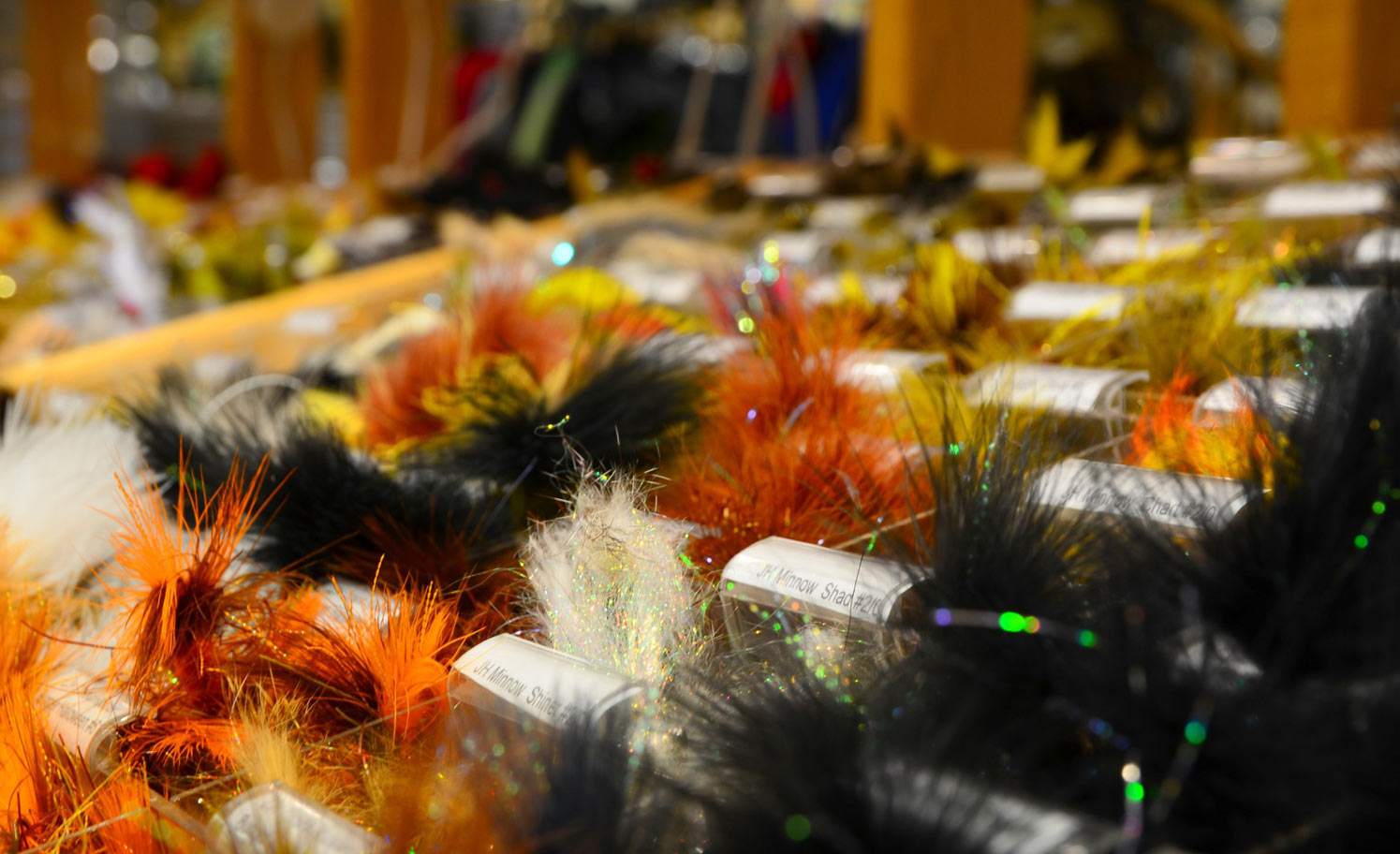
Ever stop to think about the roll the fly shop plays in your community? In your life?
Mathew Copeland at Stalking the seam did. The result is this insightful analysis. When you think about it, maybe all your community needs is a fly shop. Or maybe the fly shop is your community. Either way, this is worth your time.
CHECK OUT “THE SHOP” FROM STALKING THE SEAM
Read More »It took Me 25 Years To Figure Out Why I Fell In Love With Fishing
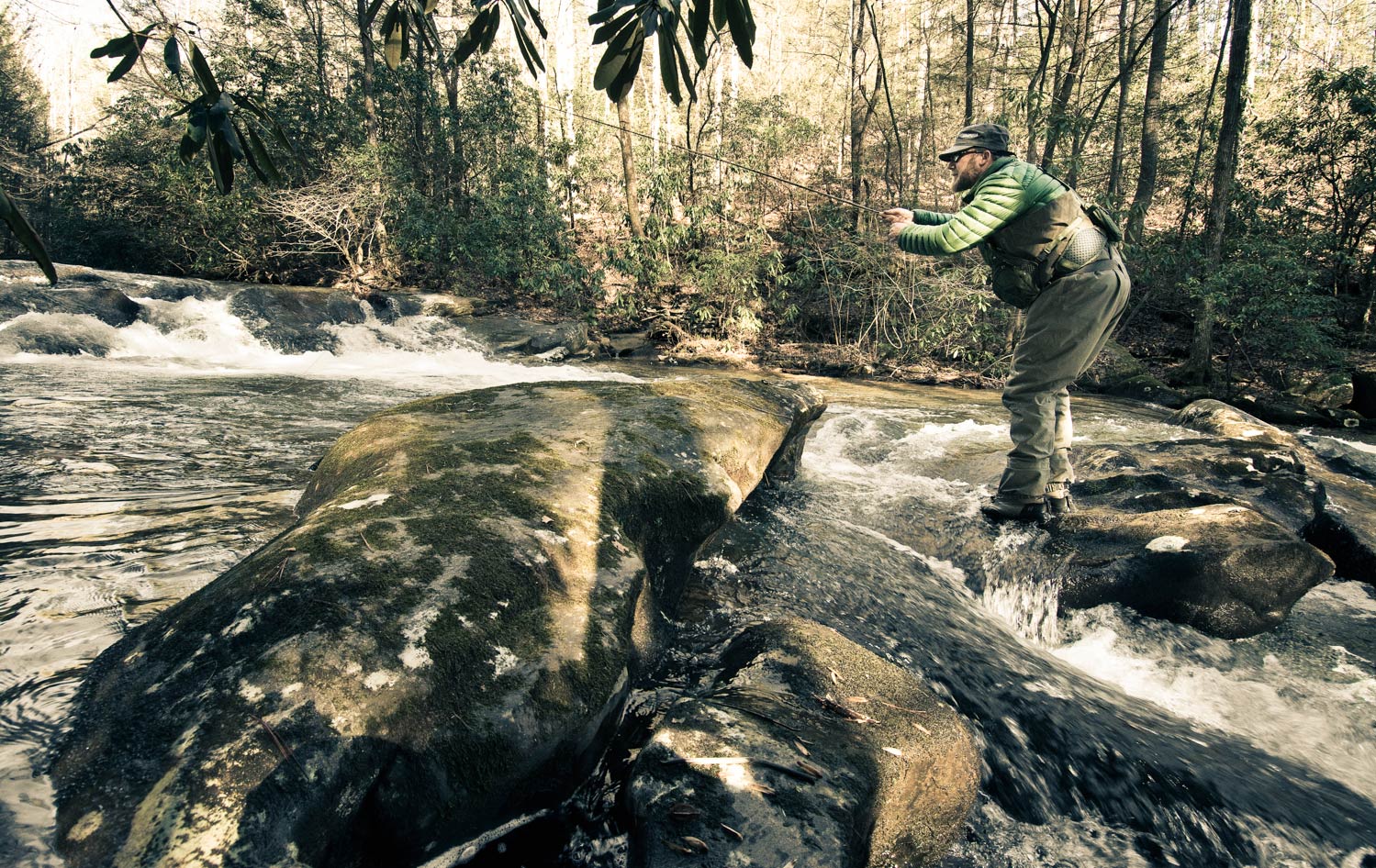
It’s well into the morning hours of the night, I just finished feeding my 6-month old daughter a bottle, and now I’m wide awake, randomly flipping channels on TV. Somewhere along the way, I stumble upon “SEC Storied” and I immediately get totally sucked into watching the show. For those of you who aren’t familiar with this TV show, it’s basically life stories of different professional sports athletes, that were past sports players for SEC colleges (usually football players but not always). Each show tells the life story of the showcased athlete, from childhood, through their sports career and into present day. Tonight, the show is showcasing the life story of the famous football running back, Herschel Walker. Almost instantly, I find myself able to personally connect and relate to Herschel’s life, as I listen to him talk about his childhood. I see many similarities in our childhoods, particularly our recollections of grade school.
Herschel’s childhood was dark and full of sadness, except for his loving parents. He had zero friends in school, he was brutally bullied by classmates daily, and he was neglected by his teachers, because they thought he was not worth their time and energy to teach. They literally threw him in the back corner of the class room because they thought he had a learning disorder because of his strong stutter. Only Herschel knew his stutter was triggered by his insecurities at school. Every day before Herschel left his house for school, his Father would give him a quarter to buy a snack with at school. However, Herschel never used the quarter to buy a snack for himself. Instead, he would give it to one of his classmates, because it would guarantee him a few brief moments of friendly conversation and interaction with someone at school. It made Herschel feel like he had a friend and gave him a small break from being made fun of. That was until at least the snack had been fully devoured, and the fake friend would walk away, leaving Herschel once again to be left awkwardly alone by himself.
The turning point for Herschal was his last day in eighth grade, when he finally found the courage for the first time to go outside for recess to play. Unfortunately, it didn’t go so well for Herschel, as he received the beating of his life for no reason, from a couple of bigger eighth grade boys. As bad as that life moment was for Hershcel, it ended up being a turning point for him in his life. From that day forward, Hershcel promised himself, that he would never let anyone beat him up again. He upheld that promise by doing as many pushups and sit-ups as he could possibly bare every day in the morning and evening. At one point Herschel was doing over 2,000 pushups and 5,000 sit-ups a day. His strict workout program, quickly turned Herschel from an overweight kid, into one of the strongest, fastest and most athletic kids in his school. He took up the sport of football and the rest is history. Football became Herschel’s life-blood and true balance in life. Today, after a highly successful college and pro football career, he’s still arguably one of the most physically fit 49 year olds in the world. That’s at least what his personal doctor claims.
Read More »A First Look At Abaco, Bahamas
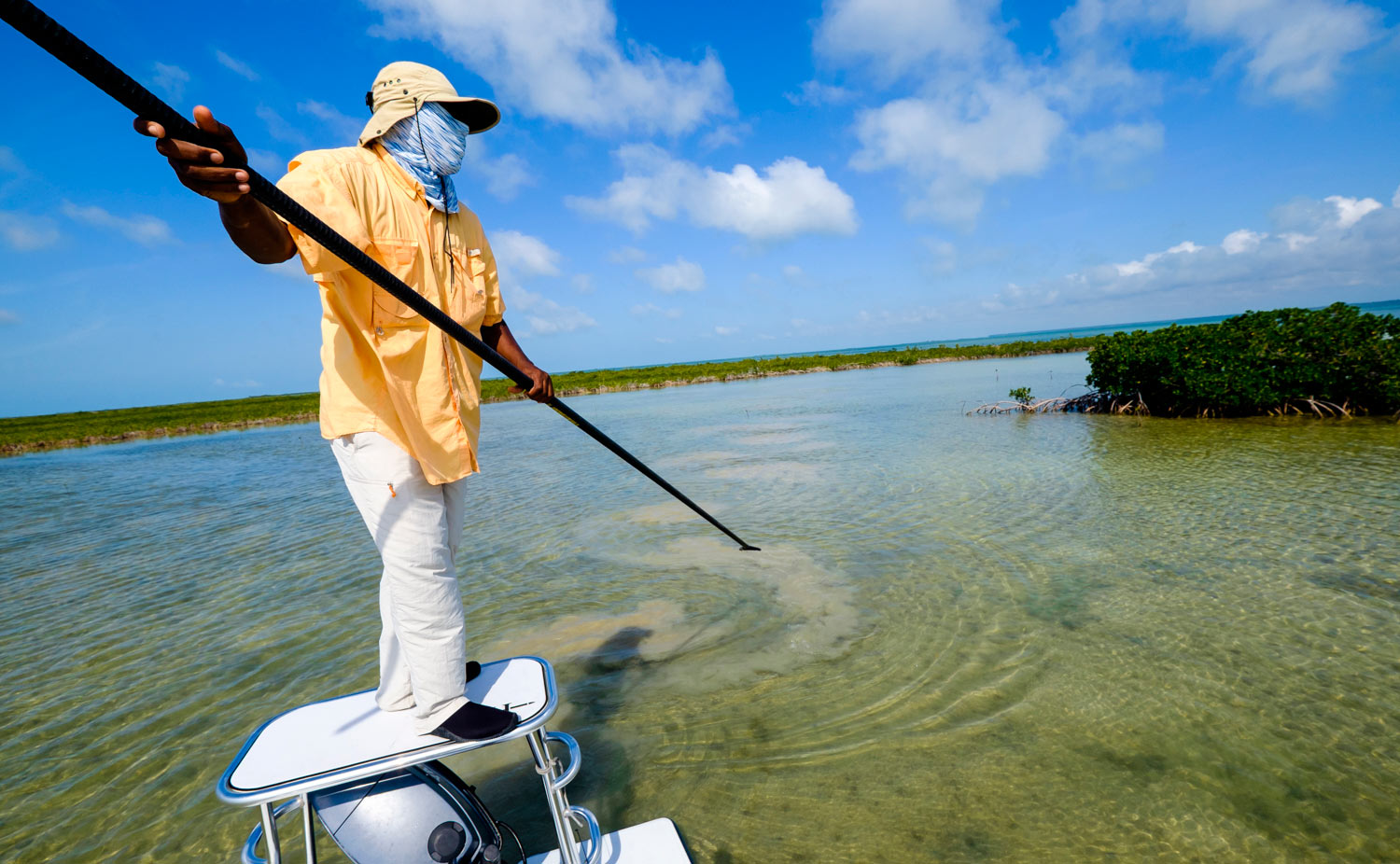
Abaco, Bahamas is a fly fishing destination that’s been on my radar for a long time.
Like most anglers, I have my home waters. Places I know well and can find fish without starting from square one, and like most anglers I tend to spend a lot of time fishing those places. Since I fish in, and write about, the Bahamas a lot, folks assume I’ve fished every inch of it. I wish that were true and I’m working on it.
An island that I’ve consistently heard good things about over the years is Abaco and it took me way too long to get there and check it out. I finally made it and, as is often the case, now I’m asking myself why it took so long. Abaco has quickly become one of my favorite destinations and I’ll be spending a lot more time there.
HERE ARE A FEW REASONS WHY ABACO IS TOPPING MY LIST OF SALTWATER FLY FISHING DESTINATIONS.
Abaco first caught my attention when I started hearing about the diversity of the fishing. A friend of mine was fishing there regularly and catching permit on every trip. Permit are all over the Bahamas but not always in numbers high enough to target and on many of the islands the guides don’t know how, or don’t care to target them. Abaco seemed to be different on both counts.
When I got there I found that the opportunities exceeded my expectations. I asked to fish permit and was consistently put on permit, in good numbers and size. I hooked a 40-pounder and you can read about the HERE. Permit were not the end of the story. The guides easily put me on tarpon as well, making Abaco a legitimate destination for a grand slam.
Bonefishing is of course the big draw for any Bahamian fishery and Abaco certainly doesn’t disappoint. There are a couple of unique opportunities for my favorite species. The Marls is an expansive system of keys and soft flats which offer consistent and interesting bonefish action. The average fish on the Marls runs 3 to 5 pounds with outliers in both directions. Unlike many Bahamian fisheries where fish travel and feed in huge schools, Marls fish are found in small packs. Not only does this make for more interesting fishing, it means more shots at fish. It’s much more fun and rewarding to cast to 500 fish in 100 packs of 5 than one school of 500.
There are large fish on Abaco, too.
Read More »Sunday Classic / 8 Common Mistakes Anglers Make Fighting Trout
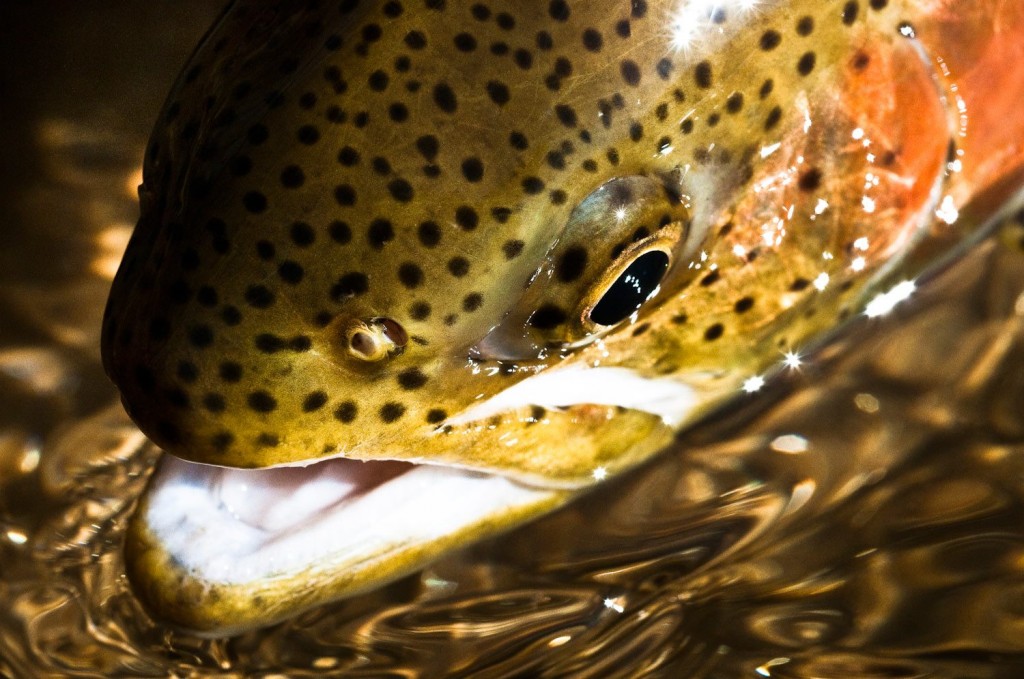
By Kent Klewein If I looked backed on my early fly fishing days and had to grade my fish fighting skills, it would yield a discouraging report card. I lost way more fish than I actually landed during those first few years after picking up a fly rod. I’ll never forget how tense and anxious I was every time I’d find myself hooked up with a nice trout. It seemed like every second of the battle I was terrified that I was going to lose my trophy. In turn, I constantly second guessed my fighting instincts, I wouldn’t follow after my fish if it swam upstream or downstream of me, and I knew very little about the correlation between rod position and applying fighting pressure. Furthermore, I was really clumsy when it came to clearing my excess fly line and reeling in the fish. I always had a hard time figuring out when it was a good time to do that. When all said and done, I bet I only landed one or two fish out of every five fish I hooked during my rookie days. That’s not so hot, probably a D average if I was grading myself extremely leniently. We’ve all been there at some point during our fly fishing career, some of us may even find ourselves with that D average right now. Here’s the positive outlook though, most trout that are hooked and lost during the fight can be linked back to a handful of common mistakes. Yet, most of the time, they all can be easily avoided if you pay close attention to what you’re doing when you’re fighting a trout. Mistake #1 – Not being in the hook set ready position I know it sounds elementary, but during my early days, I would often … Continue reading
Read More »Saturday Shoutout / S.C.O.F. Is Back
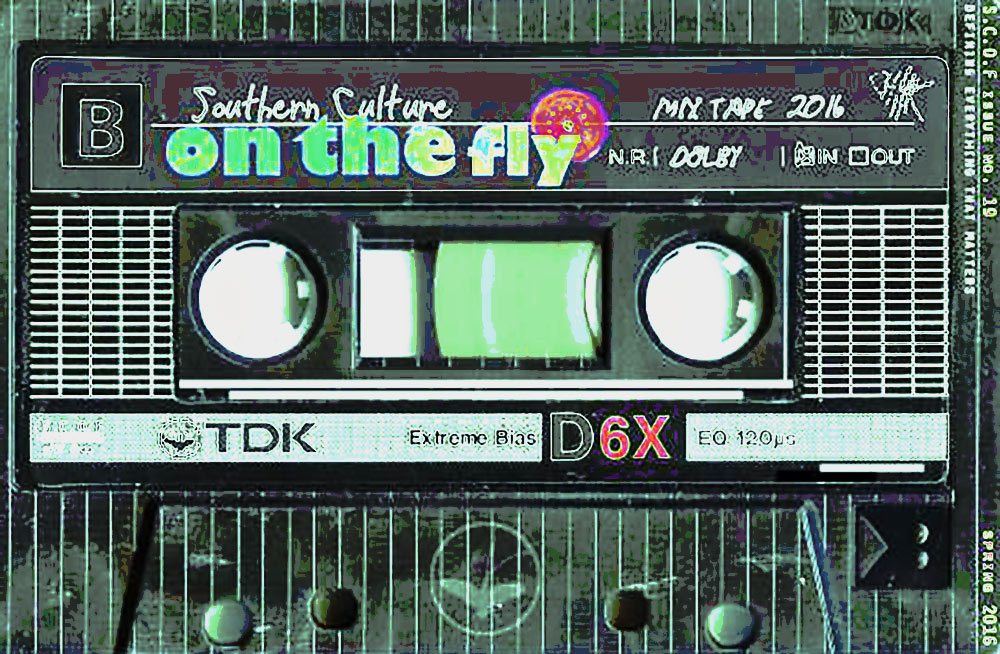
It’s time for some Southern Culture On The Fly.
It’s back and as irreverent as ever, with Warm Water Conspiracies, Choko Three Ways and Whiskey Stones. Oh yeah, and more of Dave’s famous tramp stamps. Still the coolest E-Mag in the biz and still free.
CHECK OUT S.C.O.F.
Read More »Streamer Fishing For Trophy Browns: Is Your Streamer Big Enough?
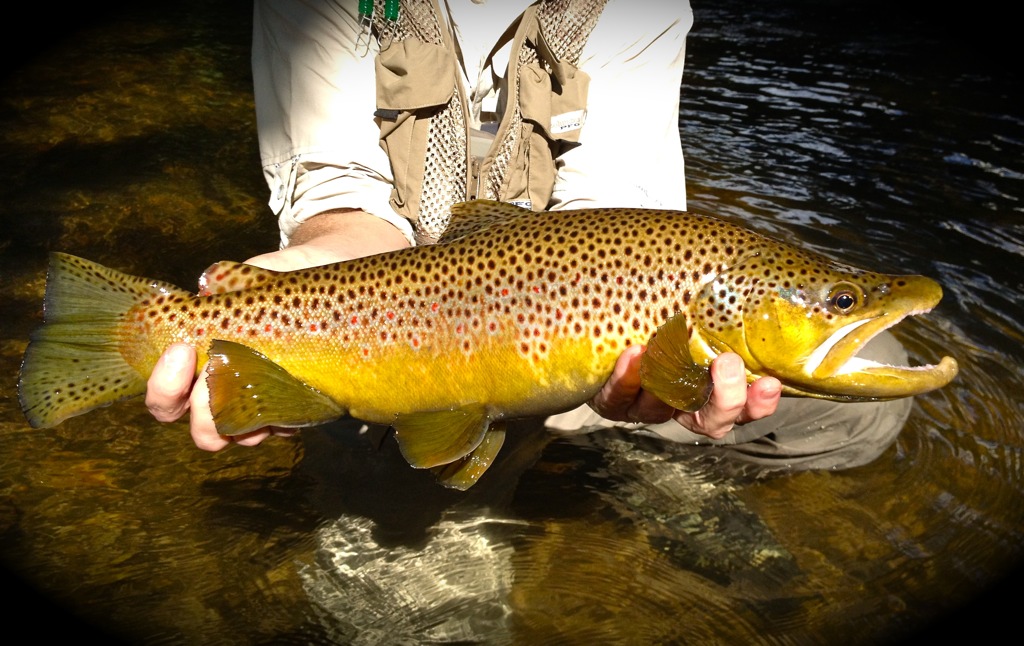
The other day I was talking with a friend about streamer fishing for trophy class trout. Specifically we were debating what’s the best size streamer for catching trophy browns. My buddy confidently proclaimed the biggest of trout will eat a three inch streamer just as fast as they’ll eat a five or six inch fly. There’s no doubt that plenty of gargantuan trout have been caught on smaller streamers by fly anglers all over the world, so I didn’t argue with my buddy even though I didn’t agree 100% with him. That being said, I do think location and food source availability does have a lot to do with what size fly pattern you should be fishing if you’re after the biggest browns in your home waters when it comes to streamers.
Where I live and guide in North Georgia, big wild brown trout are few and far between. Of the thousands of miles of designated trout water in my area, only a handful of streams and rivers support the caliber of wild brown trout that truly turn heads. The large majority of big browns that are caught each year, usually don’t end up being wild brown trout, but instead hold overs that have been previously stocked by our DNR. Lucking up and landing a twenty plus inch wild brown trout here, is a rare feat that’s not easily accomplished, regardless of how high the skill level happens to be by the angler wetting a line. Our streams arent’ that fertile so biggest of trout are more times than not, forced to eat juvenile trout to maintain their size.
I’ve always told my clients that brown trout seem to carry an overwhelming wiseness to them, when you compare them to other species of trout. They seem to always hangout in places where it’s extremely difficult to present a fly, and they’re the first fish to go running for cover when they sense the slightest bit of danger around them. The other day guiding and enjoying my time on the water mentoring one of my favorite clients (Gary Rogers), we came as close as we could possibly get to landing a giant wild brown trout. We had chosen the right location, a small wild trout stream that’s known for holding good numbers of wild brown trout. A year prior, almost to the very day, Gary had landed a huge 26″ brown. We’ve never stopped talking about that rare catch, and both of us yearned to witness a catch like that again together. As we waded up to S-bend in the stream that held a perfect undercut bank, we focused as a team the best we could on the task at hand. Both of us knew without speaking out loud, that if there was going to be a big brown anywhere in this stream, it was going to be found right here in that bend. Gary waded into position and presented his nymph rig off the back of the shoal leading towards the S-bend, and a few seconds later, he set the hook on a trout. It was approximately a 12-inch wild rainbow, and as the rainbow tried vigorously to shake the hook loose at the end of Gary’s line, I saw a big brown jolt out from the undercut bank and take a swipe at his rainbow. It was easily 24 inches or better, and as quickly as that trophy brown showed itself, it disappeared out of sight.
Read More »An Enigmatic Trophy
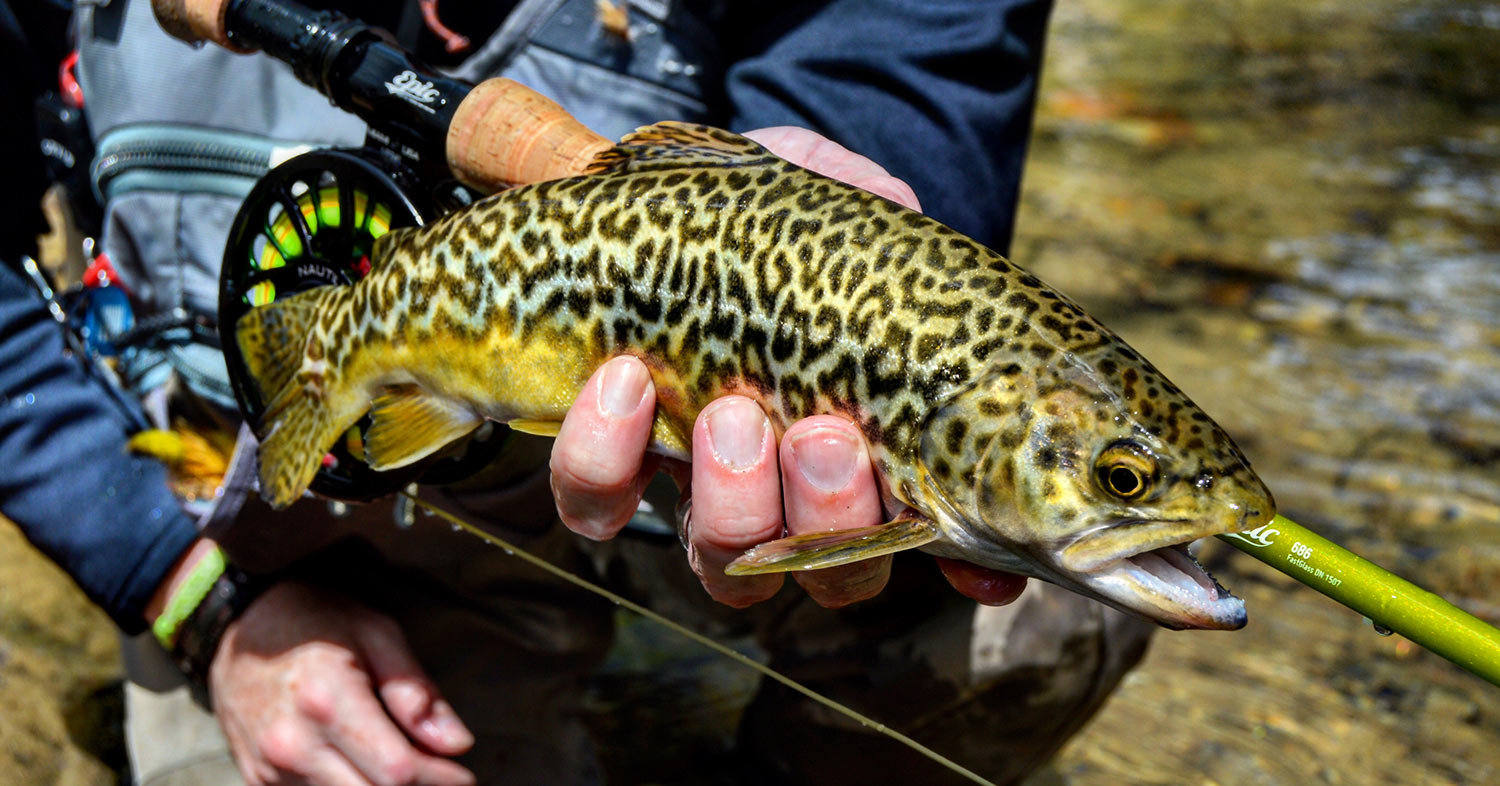
By Justin Pickett
So here I am. Streamside. Spankin’ new Epic 686 in hand.
The anticipation of tossing the first bits of feather and fur into a fishy run with this stick is more than I’ve been able to tolerate. I can’t wait to put the first trout on this glass! I barley cinched my boots down before I started my hasty march towards the water. I’ve wanted so bad to put a bend in this rod since it hit my doorstep, still just a collection of thread, glue, and fiberglass tubes. The last week has been spent working in as much time as humanly possible in order to form these materials into what I hope to be nothing less than a fish slaying saber.
Guides in place. Wraps tight. Resin cured.
It’s Go Time!
I’ve quietly staged upstream of one of my favorite runs in a small, heavily canopied, N. Georgia creek. My feet are settled on the bank as I release my fly from the frame of my reel. You guessed it. Streamer. A mix of natural, muted colors with a splash of fiery metallic used to pierce the dark waters of this overcast day. Stripping the line from my reel, I focus on the sound of the drag whizzing. I love that sound. I stare into the water as I play through my head the cast I am about to make. Tight canopy and the current is forcing a backhand presentation and it has to be on point. It has to land softly, almost on the opposite bank. I have to manage my line correctly and mend appropriately in order for the fly to swing down into the feed zone. If I want to pull the nice fish that I know lies here, I’ll have just one shot.
My mind is right. My rig is neat. The timing is right.
I relax my left hand, allowing my fly to swing away from me as I raise my rod tip. I lay the fly against the water’s surface, allowing the water’s force to pull about ten feet of line from my hands. Here we go. Loading the rod against the current, I begin my presentation. My fly disappears behind me, over my left shoulder. I’m so focused on my target, I’ve lost all of my periphery.
The rod reloads. It is prepped to transport its passenger to its destination. Next stop: Brown Town.
My right arm glides forward, beginning my forward stroke. I am poised to strike! Apply power….
“What in sam hell is”…..
Read More »Sunday Classic / Do fish dream?
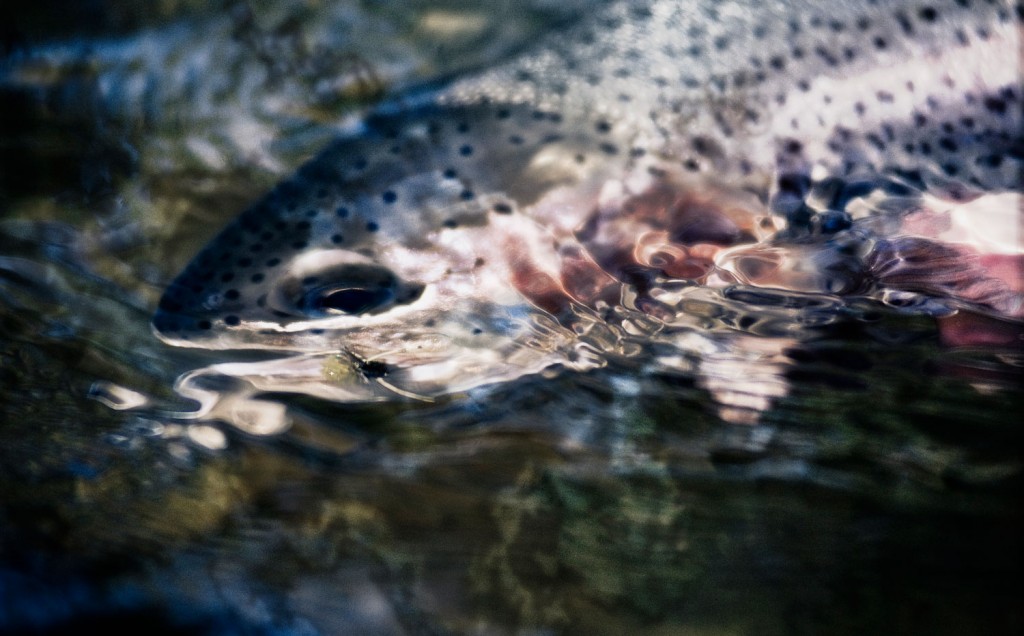
AH, THERE’S THE RUB, FOR WHAT DREAMS MAY COME IN THAT SLEEP OF FISH?
Have you ever been sight fishing to a nice fish and not gotten so much as a look at your fly? The fish just sat quietly finning as your fly drifted inches from its nose, like it was asleep. It may have been.
Do fish sleep? Undoubtedly. That’s a scientific fact that is well documented. They don’t sleep like we do and, in fact, different species of fish have very different ways of sleeping. Some sleep at night, some during the day and some are nappers. Some swim while asleep and some sleep so soundly that you can hold them in your hand without waking them.
Tuna, for example, rest motionless at night, suspended in the water. Bass and perch will sleep under or on top of logs. Reef fish seek refuge in crevices. Parrotfish build a cocoon of mucus in which to sleep. That sounds nasty, but maybe that’s the point. I wouldn’t eat something wrapped in mucus. Would you?
Although different fishes have different sleep habits they have a lot in common. Fish don’t have eye lids so they don’t exactly get shut eye. Their muscles relax, their breathing and heart rate slow, they become to some degree immobile and less sensitive to external stimuli. They also, to some extent, lose consciousness.
Fish do not live in as safe a world as we do and sleeping can be a risky proposition. For that reason most fish are never completely unconscious. Their brains sleep in shifts, resting different systems at different times. Shutting down nonessential bodily functions for periods of time. I imagine it’s much like day dreaming. Like when your brain is back on the beach in the Bahamas while your body seems to be looking over spread sheets at your desk. You’re not fully aware of your surroundings but alert enough to figure out that the sound you hear is your boss clearing his throat.
But what about those dreams?
Read More »